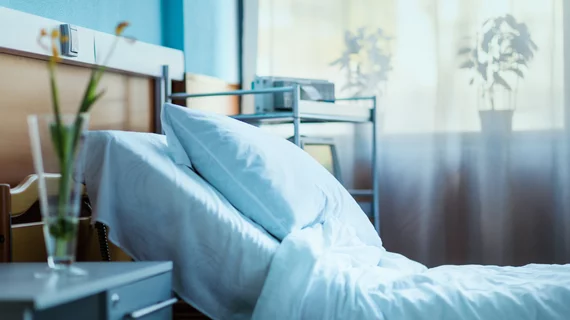Same-day discharge after interventional radiology procedure saves money without impacting outcomes
Same-day discharge after a key interventional radiology procedure can save money without impacting patient outcomes, according to research published Friday.
Previous policies at UAB Medicine called for patients to stay overnight for observation after undergoing image-guided freezing therapy for kidney tumors. However, amid the COVID-19 pandemic, with bed space at a premium, the Birmingham, Alabama, institution shifted to immediate discharge to free up space.
Interventional radiologist Andrew J. Gunn, MD, and colleagues took a closer look at how this impacted subsequent outcomes, sharing their findings in Current Problems in Diagnostic Radiology [1].
“While there are certain advantages to same-day discharge—including lower immediate costs, patient convenience and less utilization of hospital resources—it is unknown whether this change in institutional practice had an adverse impact on patient care,” Gunn, with UAB’s Division of Vascular and Interventional Radiology, and colleagues wrote May 10. “The present study primarily aims to assess if the shift to same-day discharge after [percutaneous cryoablation] increases rates of hospital re-admission related to the procedure within 30 days.”
The retrospective study analyzed outcomes for 133 patients who underwent freezing therapy. It included 67 individuals in Group A who stayed overnight after treatment in 2018-2019, and another 66 in Group B who were discharged the same day after cryoablation between 2021-2022.
Across both groups, 15 patients (or 11%) were readmitted to the hospital within 30 days after the interventional procedure. This included seven (10%) in the hospital-stay group and eight more (12%) in the same-day discharge cohort, with no difference between the two (p=0.76). Nine patients (7%) in the overall study group were readmitted within 30 days for a diagnosis secondary to the procedure. This included four in the preintervention population (6%) and five in the post, again with no difference (p=0.71). Eight patients (12%) who stayed overnight experienced an adverse event versus four (6%) among those with same-day discharges (p=0.43).
“A single center proof-of-principle study like this can be heavily influenced by local factors such as experienced (or inexperienced) operators and procedural volumes,” Gunn and co-authors cautioned. “By providing additional evidence that same-day discharge after PCA does not increase readmissions with 30 days, worsen technical outcomes, increase rates of major [adverse events], or increase rates of local tumor recurrence compared to patients who were routinely observed overnight, it is possible that this practice could be adopted by more institutions.”
Read more at the link below.

